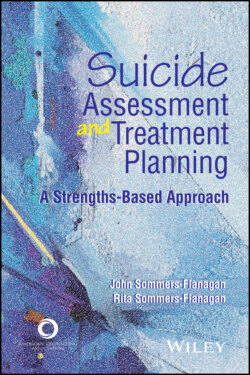Читать книгу Suicide Assessment and Treatment Planning - John Sommers-Flanagan - Страница 38
Practitioner Guidance and Key Points to Remember
ОглавлениеOver the course of your professional life, you are likely to have many people who are suicidal on your caseload. As you face the stress that these situations evoke, you will benefit from developing personal and professional self-care strategies. In this chapter, we recommended the following:
Stop reading (take breaks from suicide content as needed).
Recognize the hazards inherent to working with people who are suicidal.
Intentionally focus on positive and rewarding life experiences.
Use a variety of self-care strategies.
Accept your distress and engage in self-soothing behaviors.
In addition to developing self-care strategies, you also need to manage your attitudes toward suicide, including your personal values. Ethical bracketing—or setting aside your personal values to focus on your clients—is one method of preventing your personal values and attitudes from negatively affecting clients. We recommend using Kocet and Herlihy’s (2014) five-step counselor values-based conflict model to facilitate ethical bracketing.
Currently, the functional model for treating suicidality has the strongest evidence base. The functional model is used to identify psychopathological processes that underlie suicidal thoughts and behaviors and target them in treatment. Similar to the functional model, our suicide assessment and treatment model targets suicidal thoughts and behaviors within the context of the individual’s history and present circumstances. However, the model used in this book is a wellness-oriented, strengths-based, and holistic model that views suicidality through the lens of seven dimensions of human functioning:
Emotional
Cognitive
Interpersonal
Physical
Cultural-Spiritual
Behavioral
Contextual
The seven-dimension model is a foundation for focusing on the whole person—including personal strengths—as you develop treatment plans for clients who are suicidal. Counselors and other professionals who are working with clients contemplating suicide are encouraged to gently and collaboratively explore the questions “Where does it hurt?” “How can I be of help?” and “Where are you strong?”
